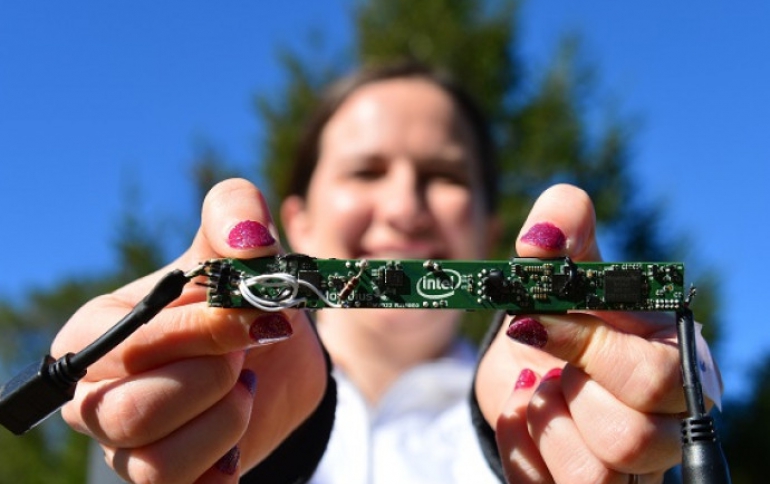
Intel TrailGuard AI Camera Protects Animals with National Geographic Society
Non-profit RESOLVE’s new TrailGuard AI camera uses Intel-powered artificial intelligence (AI) technology to detect poachers entering Africa’s wildlife reserves and alert park rangers in near real-time so poachers can be stopped before killing endangered animals.
TrailGuard AI uses Intel Movidius Vision Processing Units (VPUs) for image processing, running deep neural network algorithms for object detection and image classification inside the camera. If humans are detected among any of the motion-activated images captured by the camera, it triggers electronic alerts to park personnel so they can mobilize rangers before poachers can do harm.
“Reckless human activity is causing species loss and extinction on an unprecedented scale, with recent reports showing that as many as 60 percent of all wildlife has been wiped out since 1970. If illegal poaching of wildlife continues at the current rate, elephants are just one of the large mammal species that will be completely erased in our lifetime,” said Justin Winters, executive director, Leonardo DiCaprio Foundation, which provided critical funding for prototypes and is working to support broad-based deployment of these systems. “A commitment to protecting wildlife has been at the heart of LDF’s work from the beginning and we are excited to collaborate with Intel and RESOLVE on this breakthrough AI technology, which is set to be a game-changer for park rangers in the monitoring and management of endangered species around the world.”
TrailGuard AI uses deep neural network algorithms that allow the device to recognize humans and vehicles with a high degree of accuracy. TrailGuard AI builds upon the success of RESOLVE’s first-generation TrailGuard camera deployed in protected reserves that alerts rangers any time it detects motion. With the first-generation camera, rangers receive many photos that they had to manually review to determine if there is a poaching threat or a false-positive triggered by other motion. By adding an additional layer of AI into the system, TrailGuard AI intelligently knows when a potential poacher is present, allowing park rangers to rapidly intercept and apprehend.

TrailGuard AI is powered by the tiny Intel Movidius Myriad 2 VPU, which delivers visual intelligence to the camera itself, resulting in several benefits:
- Limited false-positives: Instead of alerting the rangers anytime there is motion in front of the camera, including from shifting cloud cover, birds and animals, TrailGuard AI only sends images to the rangers when a person or vehicle is detected. Limited false-positives means rangers have more time to focus on their work, instead of spending their time looking through hundreds of false alerts each day.
- Long battery life: The Intel Movidius VPU powers all of TrailGuard AI’s processing needs – from wake-on-motion to image processing to AI inference to communication protocols — all while running at very low power. It is designed to perform in the wild for up to 1.5 years without depleting the battery. This is an improvement over the original TrailGuard that has a separate computing unit requiring rangers to undertake the time-consuming and often dangerous task of field maintenance every four to six weeks. TrailGuard AI’s long battery life also means less foot-traffic around the hidden cameras, which could alert poachers to their locations.
- Small in size: Due to the miniscule size of the Intel Movidius VPU, TrailGuard AI is about the size of a pencil and easier to hide and camouflage from poachers and wild animals.
In partnership with the National Geographic Society, Leonardo DiCaprio Foundation and others, TrailGuard AI will be deployed in 100 reserves in Africa throughout 2019, starting with Serengeti and Garamba, with plans to expand to Southeast Asia and South America.





















